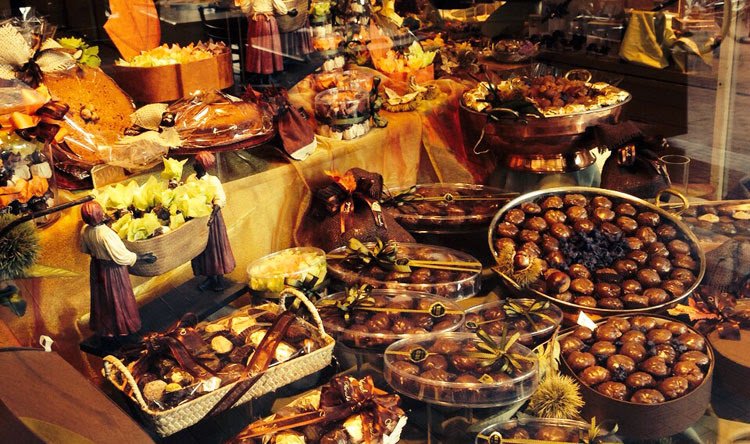Fiera del Marrone and the Cuneo chestnut
With the arrival of October, Piedmontese cities are tinged with the colors of autumn and are filled with the unmistakable scent of roasted chestnuts. In Cuneo, this atmosphere comes to life in an event that over the years has become an unmissable event: the National Brown Fair.
An event that celebrates chestnuts in all their forms, but which at the same time is a showcase of the gastronomic and artisanal excellence of the territory.
The Fair
Now in its 26th edition, the Brown Fair is now considered one of the most important autumn events in Piedmont. For four days, the historic center of Cuneo is transformed into a large open-air market, with hundreds of stands that welcome visitors from all over Italy and abroad.
This is not just an opportunity to buy and taste typical products, but a real stage of local tradition: from farms to small artisans, to the cultural associations that animate the village of Cuneo. At the center of everything, however, he remains, the undisputed protagonist: the brown one from Cuneo.
Brown or chestnut?
At first glance they seem the same thing, but in reality brown and chestnut are not synonymous.
Chestnut is the generic term that indicates the fruit of the chestnut tree, while brown is a variety cultivated and selected by man. The chestnut is smaller, with a wrinkled skin and a less sweet taste. While the brown one is larger, with a regular shape and with an inner skin that comes off easily.
This difference is not only aesthetic: it directly affects the use in the kitchen. The chestnuts, thanks to their sweetness and crunchiness, are the favorites for the preparation of refined desserts such as marron glacé, while common chestnuts are often used to obtain flours, creams and more rustic dishes.
The 'mountain bread'
Before becoming the protagonist of fine pastry recipes, chestnuts were the basis of the diet of mountain populations for centuries. Rich in starches and carbohydrates, it was considered a natural substitute for bread, hence the nickname 'bread of the poor'. Although, historically, more than a choice linked to poverty, it was a geographical necessity: in the Alpine valleys, the harsh climate did not allow cereals to be cultivated, while chestnut trees grew luxuriantly.
Chestnuts were eaten boiled, roasted or processed into flour. Then, with the arrival of corn from America, the habit of enriching polenta with chestnut flour spread, creating dishes that are still present today in traditional Piedmontese cuisine.
Over time, and especially with the greater spread of wheat, chestnut lost its role as a livelihood food and became an ingredient in more elaborate recipes.
The Cuneo brown, the fruit of grafts and agricultural selections, found its consecration with the birth of Icy brown: an elegant and complex preparation that consists of syruping and glazing chestnuts with sugar. There are several versions of the origins of the recipe, but one of the most accredited places the birth of Icy brown precisely in the Cuneo area, during the 16th century, at the court of Carlo Emanuele I of Savoy.
The Brown Fair is where you can savor the chestnut tradition of Cuneo
Wandering around the stands, visitors can discover an extraordinary variety of chestnut and chestnut dishes. There is no shortage of great classics such as roasted chestnuts and chestnut flour cakes, but there is also room for innovative proposals that use chestnuts in unusual combinations.
They range from chestnut gnocchi seasoned with butter and sage to hot soups ideal for the first cold days, to the most refined desserts in Cuneo pastry: marron glacé, Mont Blanc, chocolates and even autumn ice cream. Alongside them there are other local products, such as mountain cheeses, cold cuts, honey, wines from the Langhe and Monferrato, creating a portrait of Piedmontese taste.
However, the Fair is not just food: there are also educational workshops, meetings with chefs and experts, folk shows and cultural itineraries that tell the relationship between the chestnut tree and the history of the Alpine communities.
Conclusions
The Brown Fair is not only a gastronomic festival, but an opportunity to discover the cultural roots of a territory that has been able to transform a simple fruit into a symbol of excellence.
Those who visit Cuneo in October cannot miss the opportunity to immerse themselves in the city, its flavors and its history thanks to the Brown Fair.
